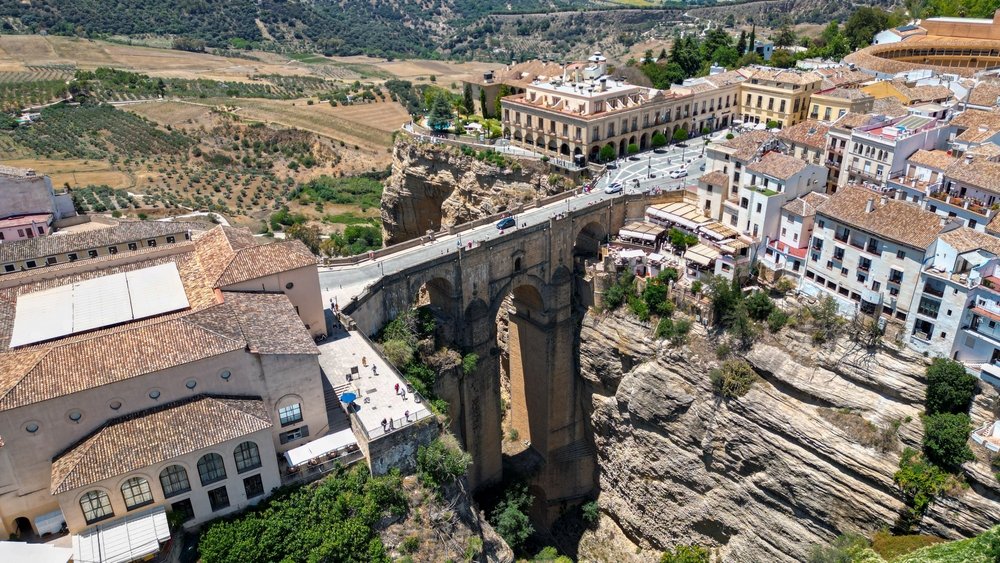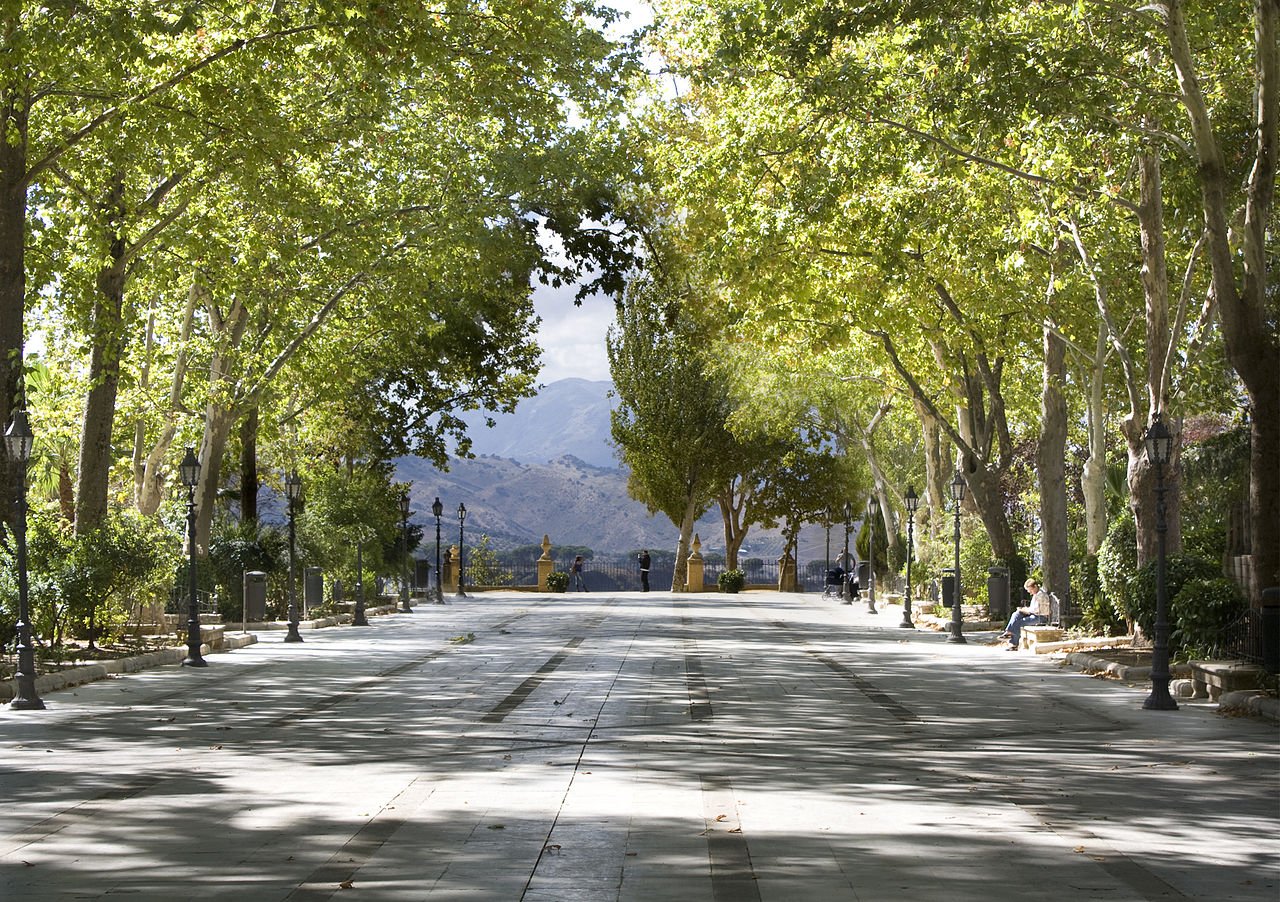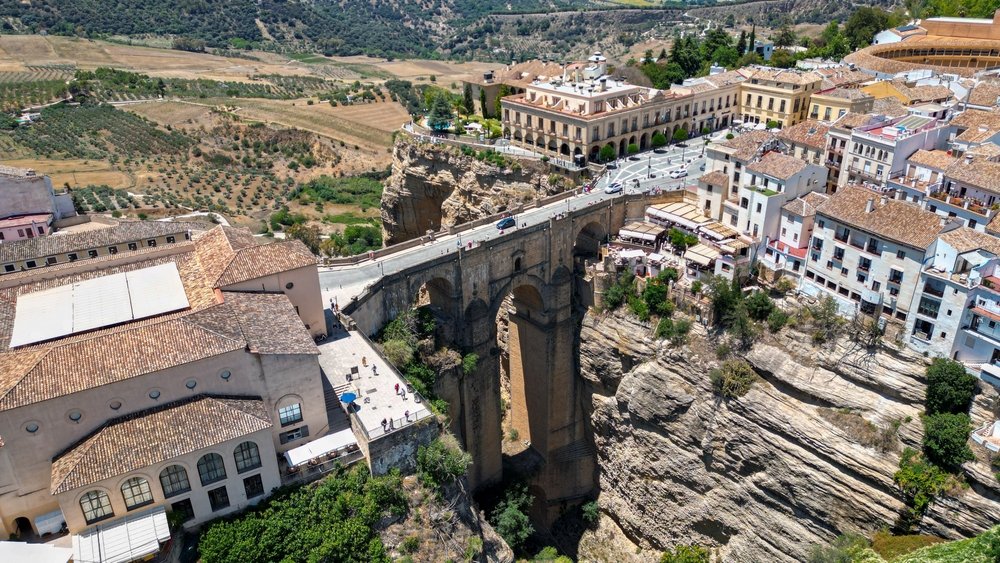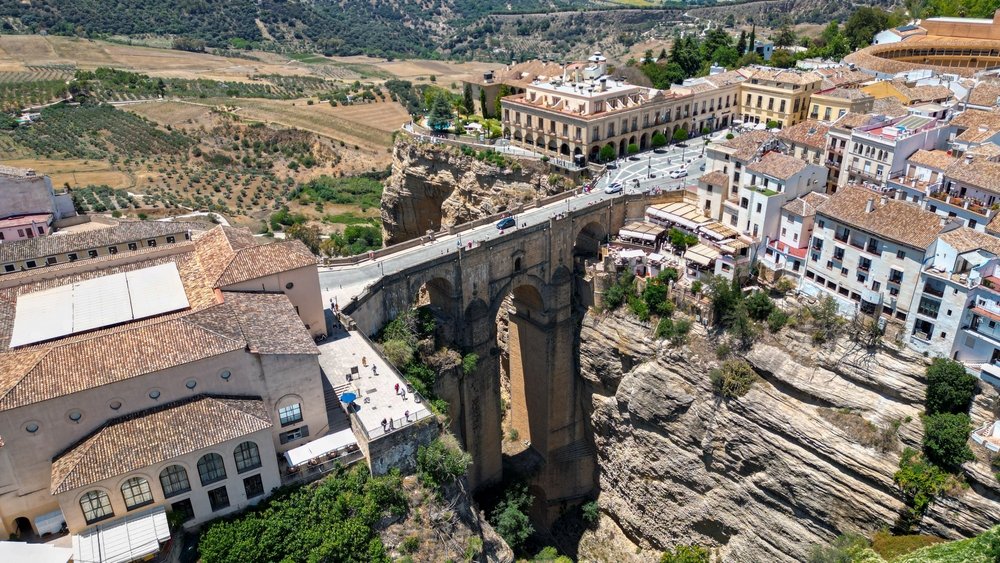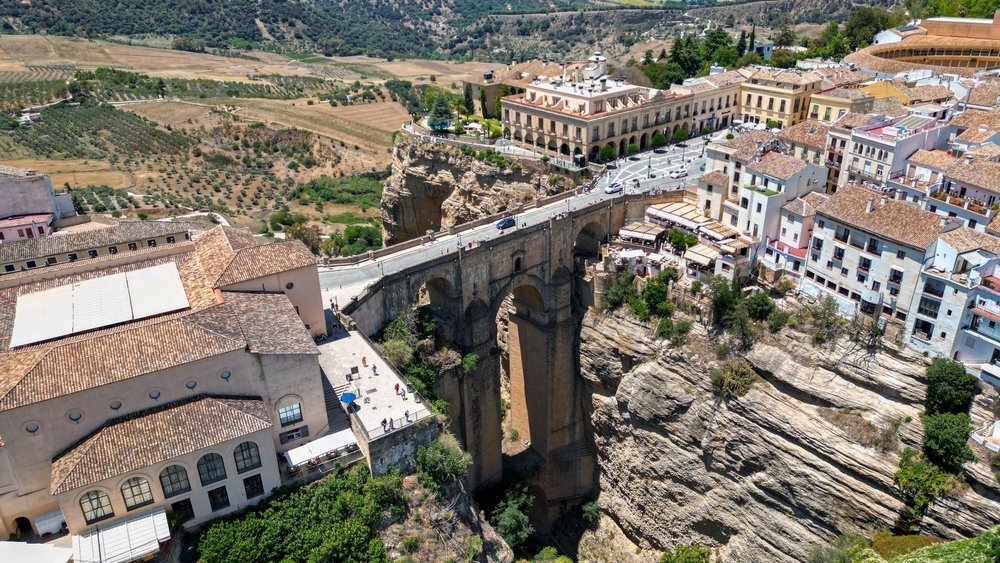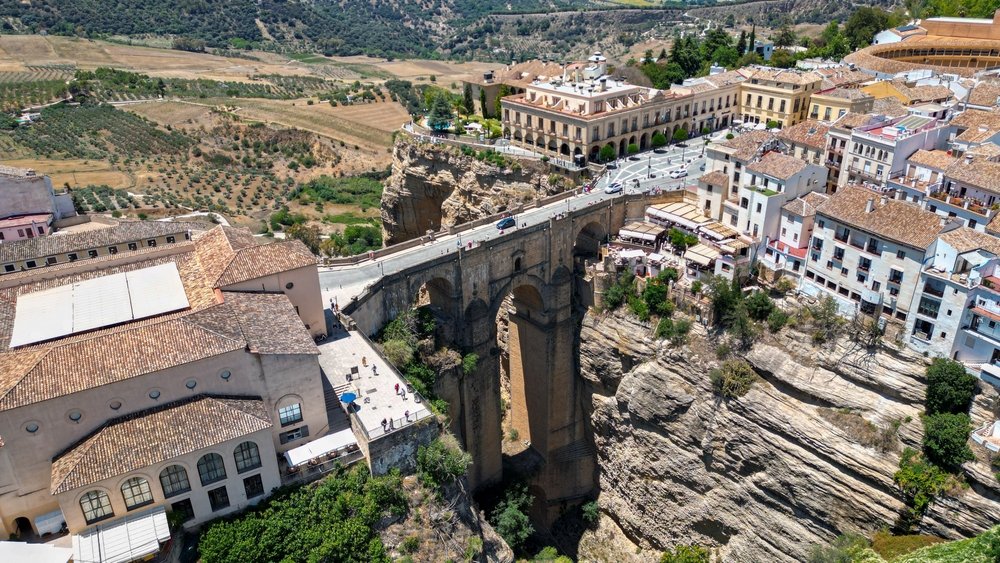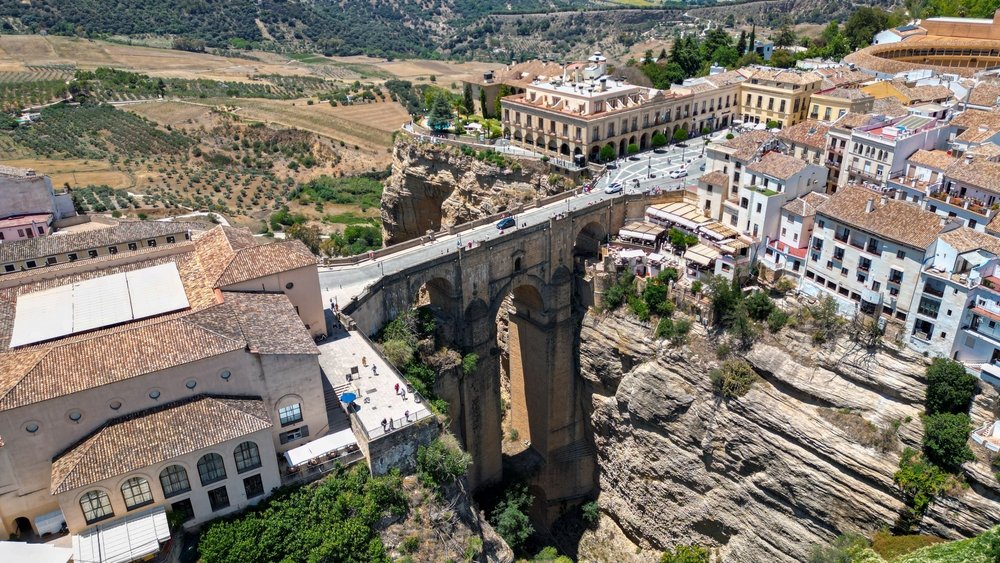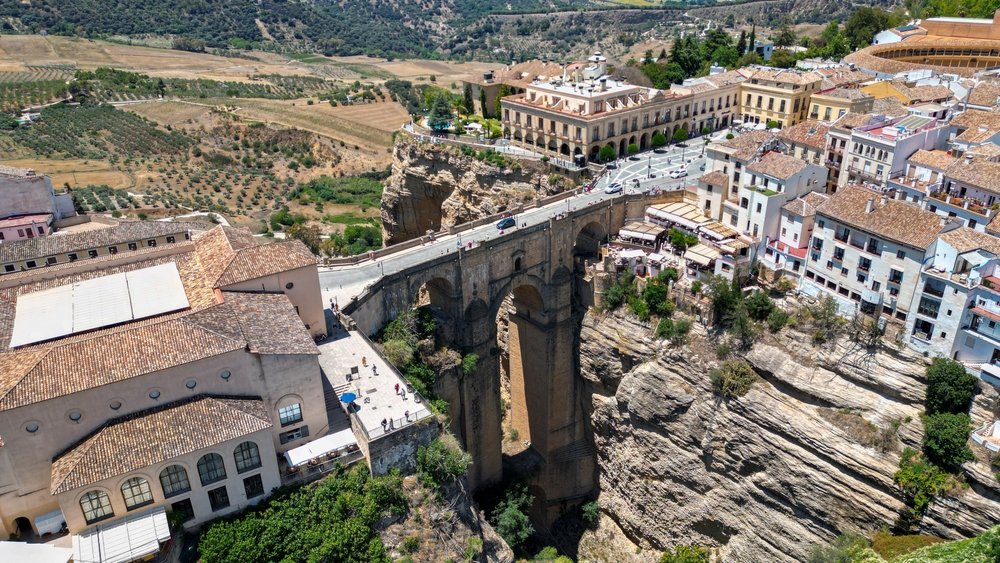It is located next to the bullring, at the edge of the Tajo cliff. It consists of five landscaped avenues that converge in a promenade adorned with balconies from which panoramic views of the valley and the Serranía de Ronda can be enjoyed.
Among the rich biodiversity of the Alameda, notable are the centennial trees, some over 200 years old, which have been cataloged as remarkable in the tree guide of the province of Málaga. These include a Himalayan cedar, an impressive stone pine, and a three-spined acacia. Additionally, the park features the geological formation known as the "Asa de la Caldera."
The Alameda also houses several significant statues, such as those of Pedro Romero and the Goyesca, as well as structures like the Paseo de Columnas. From its western part extends the Paseo de los Ingleses, which follows the edge of the Tajo to the gardens of the Hotel Victoria, built simultaneously with the Ronda railway to promote tourism in the region.
The Paseo de los Balcones del Tajo, bordered by the Camino de los Tilos, originates in the Alameda and extends to the Parador de Turismo de Ronda, lined with linden trees, each originally dedicated to a child born in Ronda on the same date of its planting. This route also passes through the Blas Infante gardens, where the mausoleum of Japanese artist Miki Haruta, an outdoor auditorium, and a tourist office can be found.
Within the Alameda is the new Vicente Espinel theater, built on the site of an old festival venue, preserving several large trees. At the northern end of the park, near Plaza de la Merced, is the cultural center, a multipurpose building housing the Vicente Espinel municipal library, exhibition rooms, and various offices distributed over three floors
